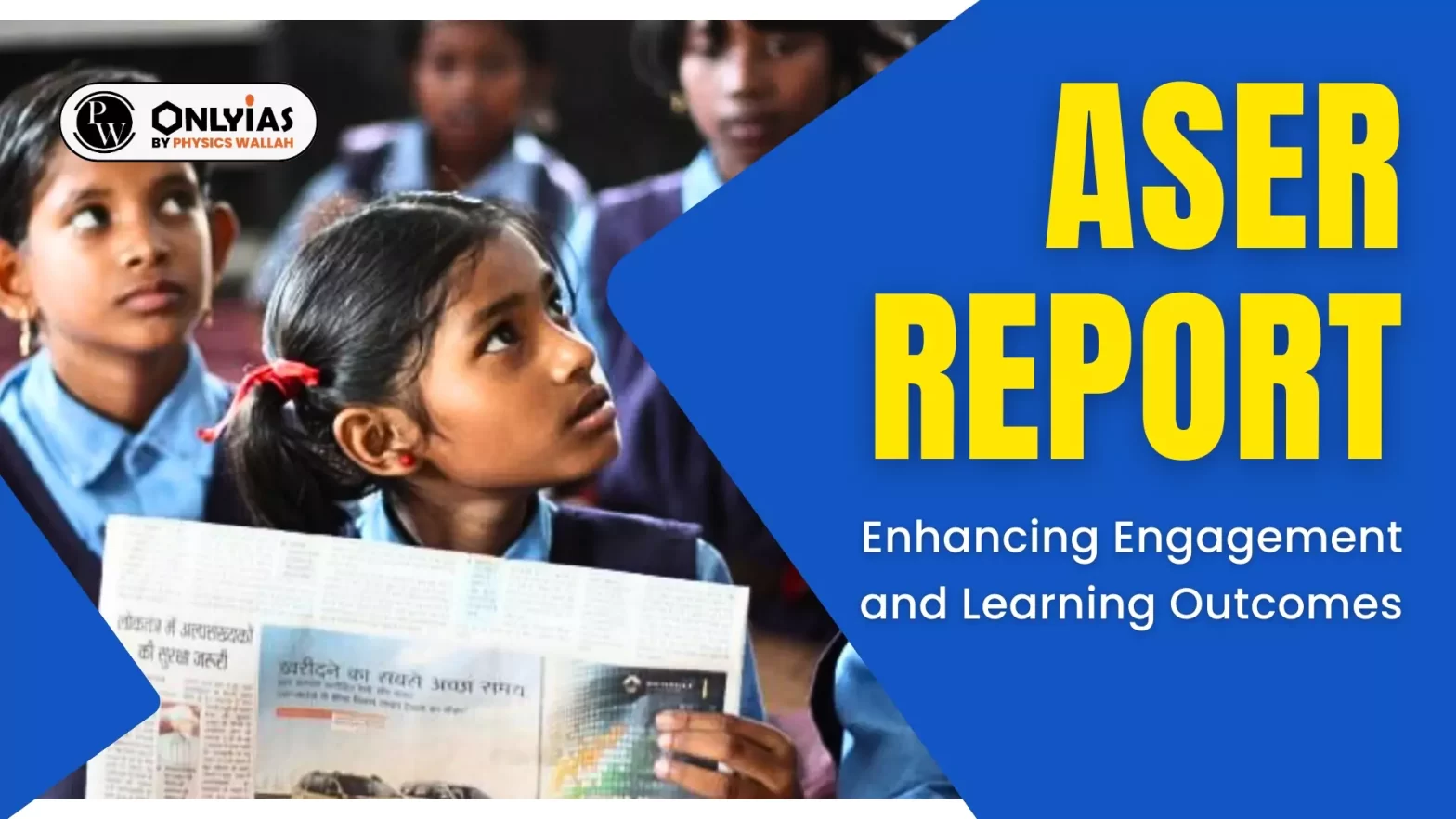Context
This editorial is based on the news “Higher engagement, better learning” which was published in The Hindu. The Annual Status of Education Report 2023 (ASER Report) states that more than 86.8% individuals in the age group of 14-18 are enrolled in educational institutions, but one-fourth of them cannot read a Class 2-level text fluently in their regional languages.
| Relevancy for Prelims: Right to Education, ASER Report, Learning Deficit, Student Engagement, Teacher Training Programs.
Relevancy for Mains: Issues related to Education, Governance and Administration Issues, Role of Teacher Training, Initiative for Governance Reforms, ASER report 2023 |
Addressing Learning Deficits: Challenges and Solutions in Indian Education – ASER Report
- Learning Deficit: India has been facing a learning deficit issue for years, highlighted by Pratham’s annual surveys. The following are the reasons for Learning deficit in India:
- Low attendance in public schools: contributes to the problem, as many enrolled children fail to learn adequately.
- Not Engaging for Students: Schools struggle to engage students effectively, leading to a perceived lack of value in education among children and parents.
- Cycle of Demotivation: Government school teachers often blame poor student attendance for low learning outcomes, creating a cycle of demotivation.
- Teachers lack motivation: Without student attendance, teachers lack motivation to increase engagement, creating a challenging situation with no clear solution.
- Issue with Teaching Methods: In many Indian classrooms, teachers primarily focus on students sitting in the front rows.
- Teachers often write questions and answers on the blackboard, while students spend most of their time copying.
- Questions posed by teachers often receive limited responses, with students either answering in unison or remaining silent.
- Only appearance of Active Learning: Despite appearances of active learning, students may not be emotionally or cognitively engaged.
- Reliance on rote learning rather than developing cognitive and practical skills.
- Governance and Administration Issues: Inadequate teacher allocation, poor systemic governance, outdated teaching practices, lack of teacher support and coaching, all contribute to making this hard to implement at scale.
- Systemic Issues: Many teachers weren’t taught in an engaging manner themselves. As a result, there is a lack of concern about engaging learners.
- Teaching is often viewed as one-way communication without feedback from students.
- This limits teachers’ ability to customize teaching to meet individual learner needs.
Way Forward: Strategies for Enhanced Student Engagement
- Training the Teachers: Teachers should be viewed as learners too and they should be provided with an engaging learning environment with 70% practice and 30% theory so that training serves a two-fold purpose: teachers get trained, but also experience learner engagement for themselves.
- Student engagement: Structured lessons, high quality teacher-student relationships, and student autonomy, i.e. allowing students choices in the classroom result in higher engagement and better learning outcomes.
- Need of the hour is a Two way Communication for better Learning Outcomes: In an ideal classroom:
- Every child is actively engaged through two-way communication.
- Students collaborate, solve problems, and learn from each other.
- Hands-on learning experiences are provided with various materials.
- Teachers offer real-time feedback and support.
- Active engagement creates a meaningful learning environment for students to develop different skills beyond rote learning to thrive in the modern world.
Conclusion
There is a need to focus on the Right to Learning in India along with the Right to Education.
![]() 14 Mar 2024
14 Mar 2024

